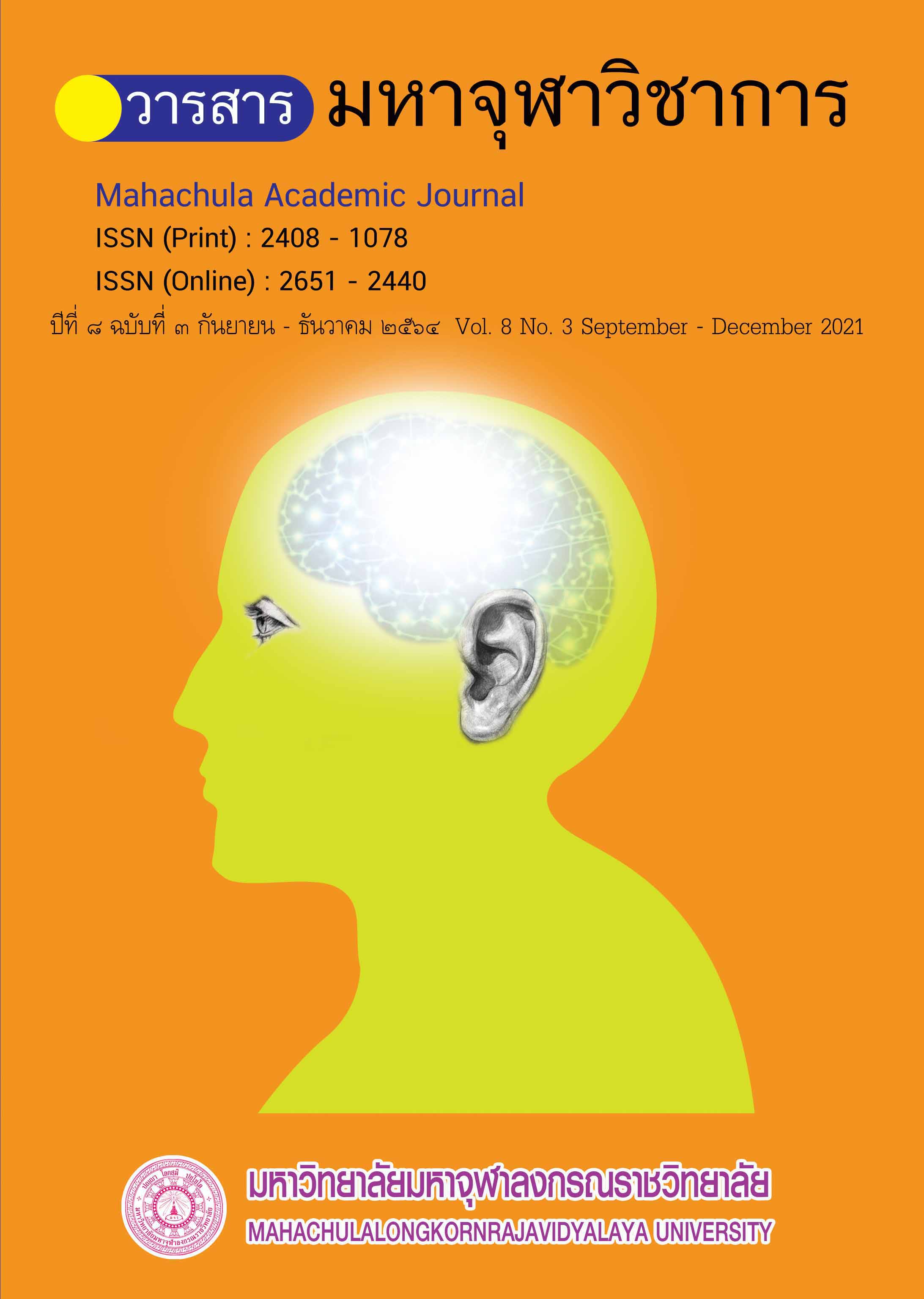The Buddha-sculpture in the Posture of Naga-Prok : Analysis from Historical Evidence
Main Article Content
Abstract
“Naga” is a word that has different meanings between Indian history and Hindu mythology. In the history of India, the Nagas are a mixed Mongolian tribe whose original home was probably in highlands of Iran. In India they were a branch of the Asuras. They honored the power of mother and were in all probability a matriarchal people. They worshipped serpent cult. This tribe is classified as Tibeto-Burmese. The Naga tribes in northern India were of Scythic affinity and associated with the serpent totem. They were alive as an important race of men, occupyied and ruled among themselves in the political conflicted territories at the time just before the Buddha’s life. In Hindu mythology, the Naga is a large serpent that eats grogs, lives in the depths of the earth and have a wealthy position.
The Buddha-sculpture in the posture of the Naga-Prok is the symbol that anyone who sees this statue knows that is the image in the posture of sitting cross-legged, placing supine hands stacked on the top of knees. There are a large serpent spreading a roof over the top of the image head.
The incident appears in the legend of the Buddha’s history after the second week of enlightenment. This symbol is widely known in Theravada lands such as Sri-Lanka, Myanmar, Thailand, Laos and Cambodian.
Article Details
References
กรุณา กุศลาสัย แปล. พบถิ่นอินเดีย พิมพ์ครั้งที่ ๓. กรุงเทพมหานคร : บริษัทเคล็ดไทย จำกัด, ๒๕๓๗.
พระธรรมปิฎก (ป. อ. ปยุตฺโต). จาริกบุญ-จารึกธรรม. กรุงเทพมหานคร : บริษัทสหธรรมิก จำกัด, ๒๕๓๙.
มหาวิทยาลัยมหาจุฬาลงกรณราชวิทยาลัย ผู้จัดทำ. พระไตรปิฎกภาษาไทย ฉบับมหาวิทยาลัยมหาจุฬาลงกรณราชวิทยาลัย. กรุงเทพมหานคร : โรงพิมพ์มหาจุฬา, ๒๕๓๙.
มหาวิทยาลัยมหาจุฬาลงกรณราชวิทยาลัย. อรรถกถาภาษาไทย ฉบับมหาวิทยาลัยมหาจุฬาลงกรณราชวิทยาลัย. กรุงเทพมหานคร : โรงพิมพ์มหาจุฬา, ๒๕๕๓.
ราชบัณฑิตยสถาน. พจนานุกรม ฉบับราชบัณฑิตยสถาน พ.ศ. ๒๕๔๒. กรุงเทพมหานคร : นานมีบุ๊คส์ พับลิเคชั่น, ๒๕๔๖.
Bhattachari, Sukumari. Buddhist Hybrid Sanskrit Literature. Calcutta : The Asiatic Society,1992.
Biswas, S.K. Buddhism the religion of Mohenjodaro & Harappa Cities. Calcutta : Sikha Biswas, 1999.
Campbell, Joseph. Myth and Symbols in Indian Art and Civilization. Varanasi : Motilal Banarasidass, 1990.
Mehta, R. N. Pre-Buddhistic India, Delhi : Anmol Publications, 1985.
Varma, V. P. Early Buddhism and Its Origin. New Delhi : Munshiram Manoharlal, 1973.
Wilson Ed., Sacred Books of the East . New Delhi : Asian Educational Services,1978.


